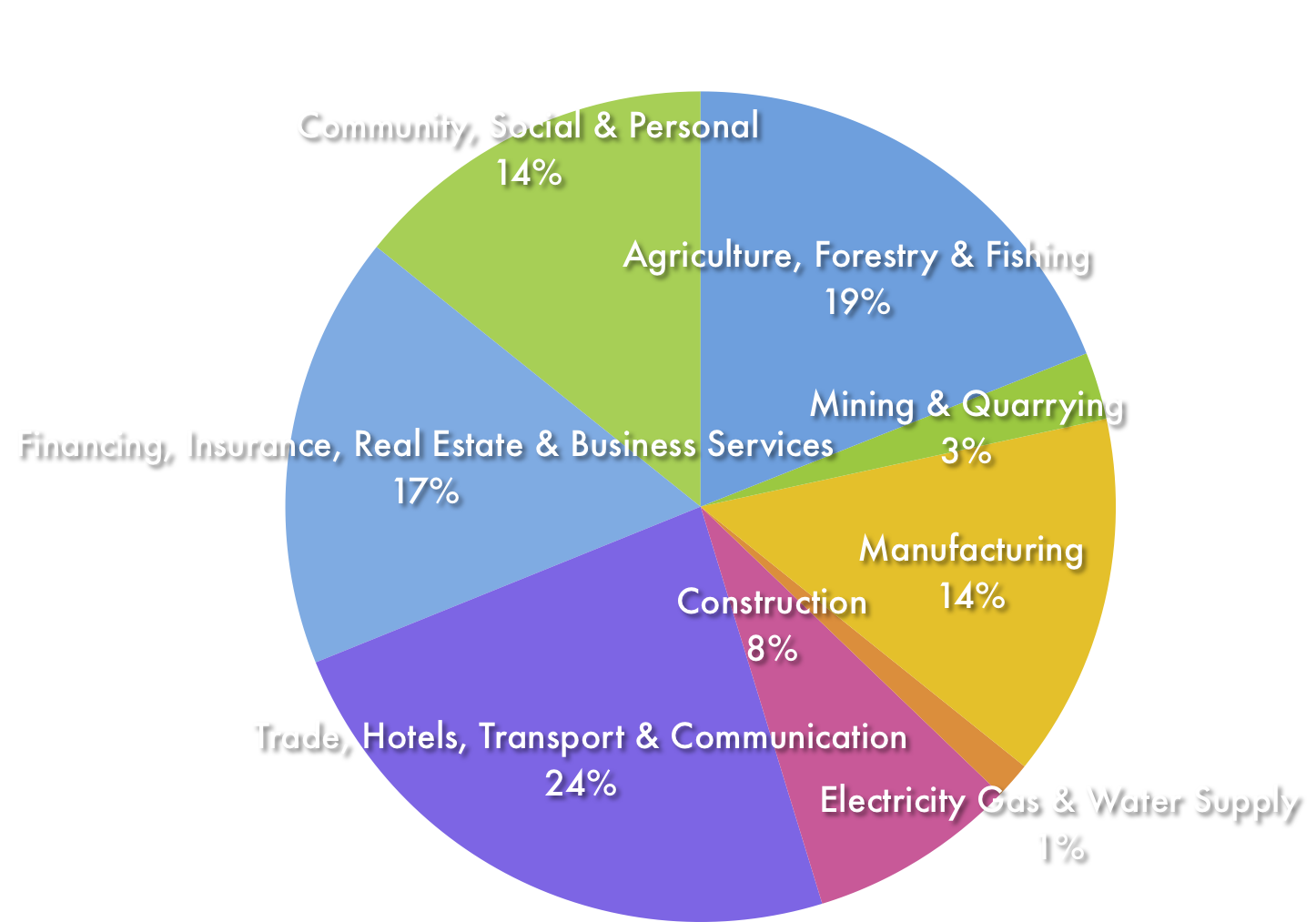A few thoughts on the GDP Numbers
Last week, the revised estimates for 2010 – 11 GDP were declared, and I was going through the numbers to see if I could find something interesting. The numbers themselves didn’t hold much surprise, and the slowdown in the latest quarter has been well documented by newspapers already, so I won’t dwell on that.
Instead, let’s take a look at the breakup of GDP by economic activity.

Looking at this, a few things come to mind.
Where did the Industrial phase go?
People who study Economics in school are told how an economy grows from depending primarily on Agriculture to depending on Industries, and then moving on to Services. That’s true for most countries, and has certainly been a big factor in the growth of our big neighbor.
However, India went from being primarily an Agriculture economy to a Services economy, and missed the Industrial phase in between. This is amply clear from the break – up of various activities in the above chart and the low percentage of Manufacturing in it.
I think this is one reason for the kind of divide we see between the rural and urban areas today. You had a situation where most of the jobs created after liberalization were in the so called new economy that was more easily accessible to urban folks than it was to rural folks, and with no corresponding increase in agriculture incomes – the divide grew from there on.
Don’t we have about 74% of our people in rural areas?
When we looked at India’s unemployment numbers, we saw that about 74% of the population is estimated to be in rural areas.
Agriculture is one of the mainstays of the rural areas, and while we’re seeing people in rural regions moving from agriculture to other sectors – a 19% agricultural share when close to three quarter of Indians live on agriculture is totally off balance.
As India grows, the share of agriculture will give way to other sectors, and that’s good as long as people in the entire country can get a piece of that action. I feel that a strong manufacturing sector can create a lot of jobs in a much more broad based manner than services sector alone can, and there has to be a focus in that direction.
8% Construction and 1% Electricity, Gas & Water – Really?
It’s estimated that some 400 million Indians don’t have access to electricity and there are over 1,00,000 un-electrified villages. These are staggering numbers, and when you read that the total share of Electricity, Gas & Water Supply is 1% and Construction alone is 8% – you know that the people building houses are not the same people who are lighting lamps.
To me, this data point alone speaks volume on the disparity that exists between Indians today.
The Big Divide
To me, all these numbers point to the huge disparity in living conditions that Indians share, and also how much needs to be done for more inclusive growth. We have one of the fastest growing economies, but we also have an unbelievably high number of people below the poverty line.
I think developing a manufacturing sector is a must to bring millions of people out of poverty, and bridge this huge gap.
I can’t see how services alone can absorb so many people, and the best way to deal with this situation seems to be an effort to build a strong manufacturing sector.

I think that to develop Indian GDP we should emphasise on agro based industry and cottage industry and small and medium industy so that both rural and urban class can get benifit and Indian GDP can grow more in agriculture and manufacturing
It will take humongous effort to build a strong manufacturing sector.
Industrial output grew by just 7.8% in the 2010-11 fiscal year which was way slower than 10.5% in previous fiscal year. and Manufacturing output, which constitutes approx 80% of the industrial production, rose just by annual 6.9%!
Anything to do with India has mind boggling numbers – imagine 400,000 people without electricity??? That’s just incredible!!!
I think the entire population of Europe is some 850 million or something, and we have half of that here who don’t have electricity? Even if that number is not accurate and the true number is just one fourth to say 100,000. Even that’s incredibly high, and needs some bold and grand action to improve!
Indian economy is growing but growth is lopsided.
We have a full fledged Planning Commission but every plan goes awry.
The rural and urban divide is growing .GDP share in Agrl is 19% but rural population is 74% of which at least 40 crs without electricity.Share of service sector is around 56% and thus fruits are enjoyed by the urban residents.Migration of population from Agrl to Industrial sector is amiss as Industry GDP is only about 25%.
Let purchasing power be placed in the hands of the rural population so that social distribution of wealth is more equitable
This analysis is at the first site more sensible. Because the agricultural contribution in GDP is plotted against rural population and its employment. A deeper analysis about this direction in the background of our country and its culture. We have more energy in the form of human beings but no direction to spend it properly.
Energy is realted to manufacturing. Coal is realted to energy. Look at the hue and cry made to solving the coal mining problem. No one is bothered as long as missle class keeps getting pay rises in higher technology areas and gets services to be comfortable. We need a leader who speaks out.